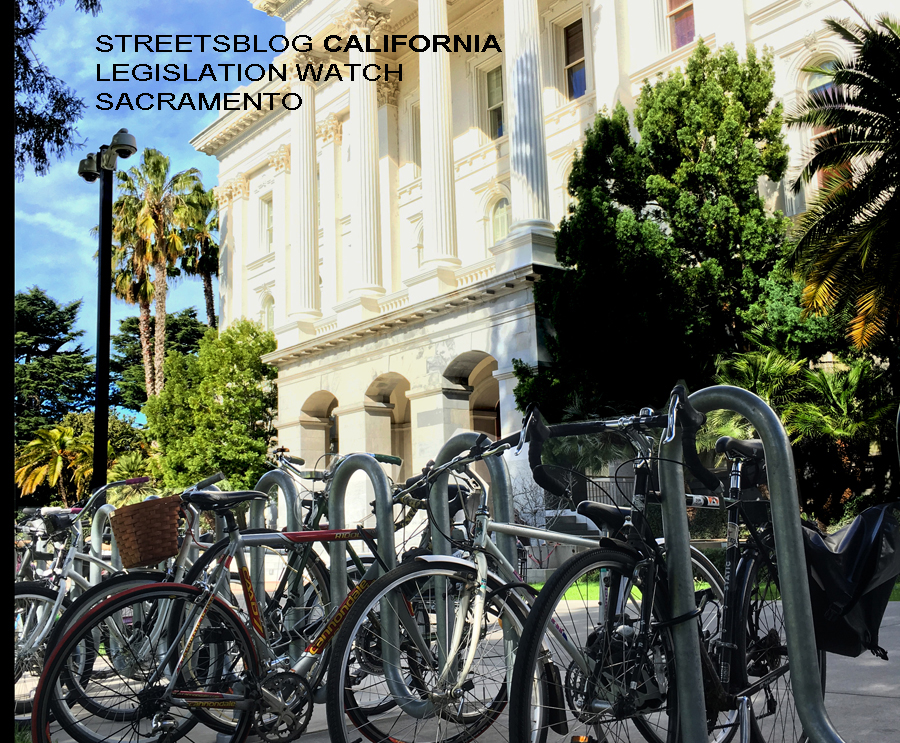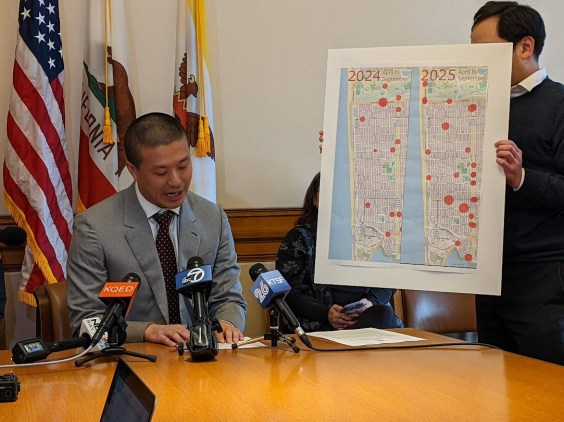Note: GJEL Accident Attorneys regularly sponsors coverage on Streetsblog San Francisco and Streetsblog California. Unless noted in the story, GJEL Accident Attorneys is not consulted for the content or editorial direction of the sponsored content.
Earlier this evening, the Office of Governor Gavin Newsom announced that the Governor signed into law A.B. 43, which allows municipalities greater flexibility in setting speed limits, and A.B. 917, which allows for camera enforcement of bus-stops and bus-only lanes. Newsom also announced vetos of A.B. 122, the Safety Stop Bill, and A.B. 1238, which supporters had labeled the "Right to Walk Bill."
A.B. 43 from Laura Friedman, D-Glendale, reforms the rules for setting speed limits. The bill stems from several years of work on the Zero Fatalities Task Force, which itself came out of an earlier attempt to do what this bill would do: make it possible for cities to set speed limits that make sense for people outside of cars. Assemblymember Laura Friedman has made the effort to rationalize the way speed limits are set a priority, and the Zero Fatalities Task Force she called for found that she was correct: the current practice of allowing prevailing car speeds to determine speed limits is not working.
A.B. 43 allows local authorities to consider the safety of vulnerable users when setting speed limits, something they are currently not allowed to do. It also allows them to lower speed limits in certain areas, which current law hampers. It is not a panacea; speed limits themselves will not calm traffic.
A.B. 917 from Assemblymember Richard Bloom (D-Santa Monica) will allow transit agencies to put cameras on buses to enforce parking violations at bus stops and in bus-only lanes. The few arguments made against it claimed it would be unfair to drivers who "stopped for just a second" and could too easily caught breaking the law.
A.B. 122, the Safety Stop bill from Tasha Boerner Horvath, D-Encinitas. Would would have allowed bike riders to treat stop signs as yield signs had it not been vetoed.
Other states that have adopted similar bills have experienced big safety improvements. Advocates have for years pointed out that the concept of "yielding" is well established, well understood, and can be learned. Calling for bikes to yield does not give them free rein to blow through intersections but encourages more thoughtful interactions with traffic and fewer crashes because riders can clear intersections more quickly. Also, stop sign enforcement against bicycle riders is a draconian practice that discourages people from riding - the opposite of what California should be doing to meet climate and sustainability goals.
A.B. 1238 from Phil Ting, D-San Francisco, the Pedestrian Access or Decriminalize Jaywalking bill was also vetoed by Newsom. Unequal enforcement is a strong argument in favor of A.B. 1238. There is a long and sordid history behind the racist term "jaywalking." The notion was invented to keep people from using streets the ways they had traditionally been used, to reserve street space for cars. A.B. 1238 would allow people to cross streets safely, even if they're not inside the protective caress of a few lines of paint on the ground.
Earlier this week, Newsom signed two other pieces of legislation that Streetsblog has been following.
A.B. 773, from Adrin Nazarian (D-Los Angeles) will make Slow Streets, which some communities have enjoyed as recreational areas during COVID, a permanent possibility in state law.
S.B. 339 from Senator Scott Wiener (D-San Francisco) extends the current pilot program that is testing a road user charge to replace the gas tax, and adjusts it to better reflect state goals. Some have argued that a per-mile road charge is the beginning of a slippery slide down a privacy-invasion slope, and that it would lead to long-distance commuters paying higher costs. But those same drivers also cause more wear and tear, thus higher maintenance costs to everyone. S.B. 339 will also take equity into account in the way it tests these concepts, and will test ways to include vehicle efficiency in its considerations, because bigger, heavier vehicles cause more wear and tear on the roads.






